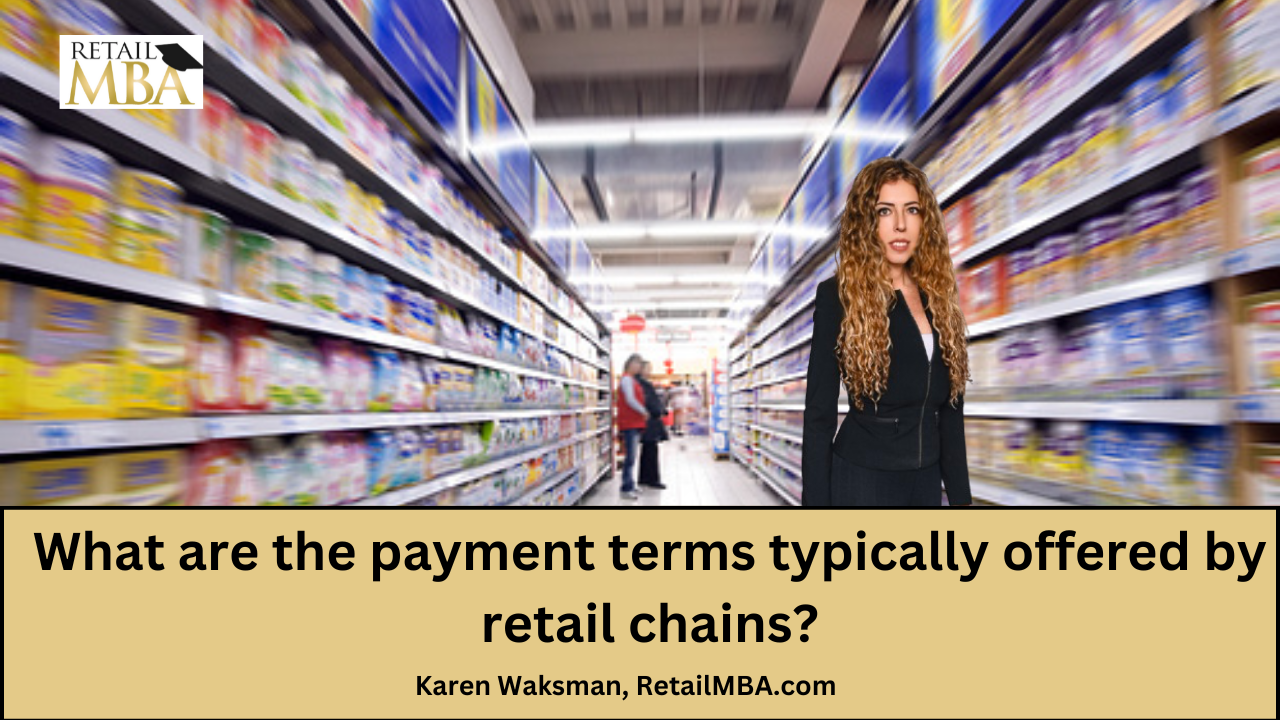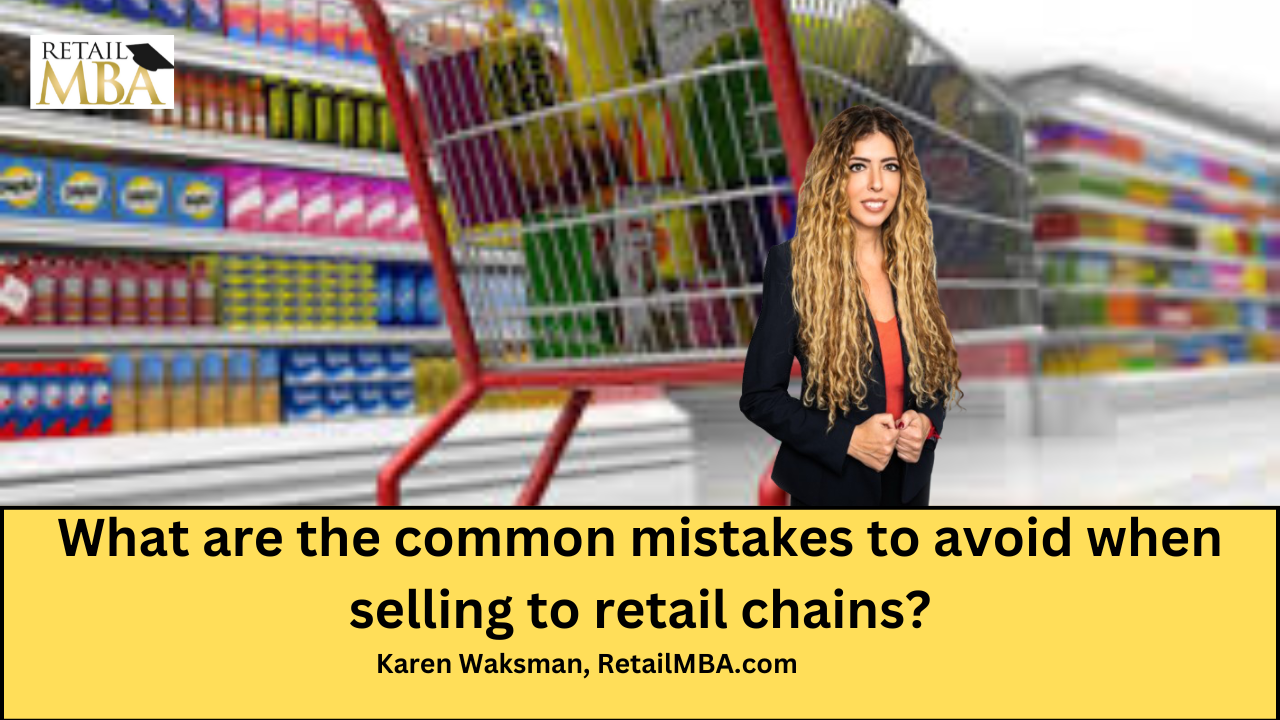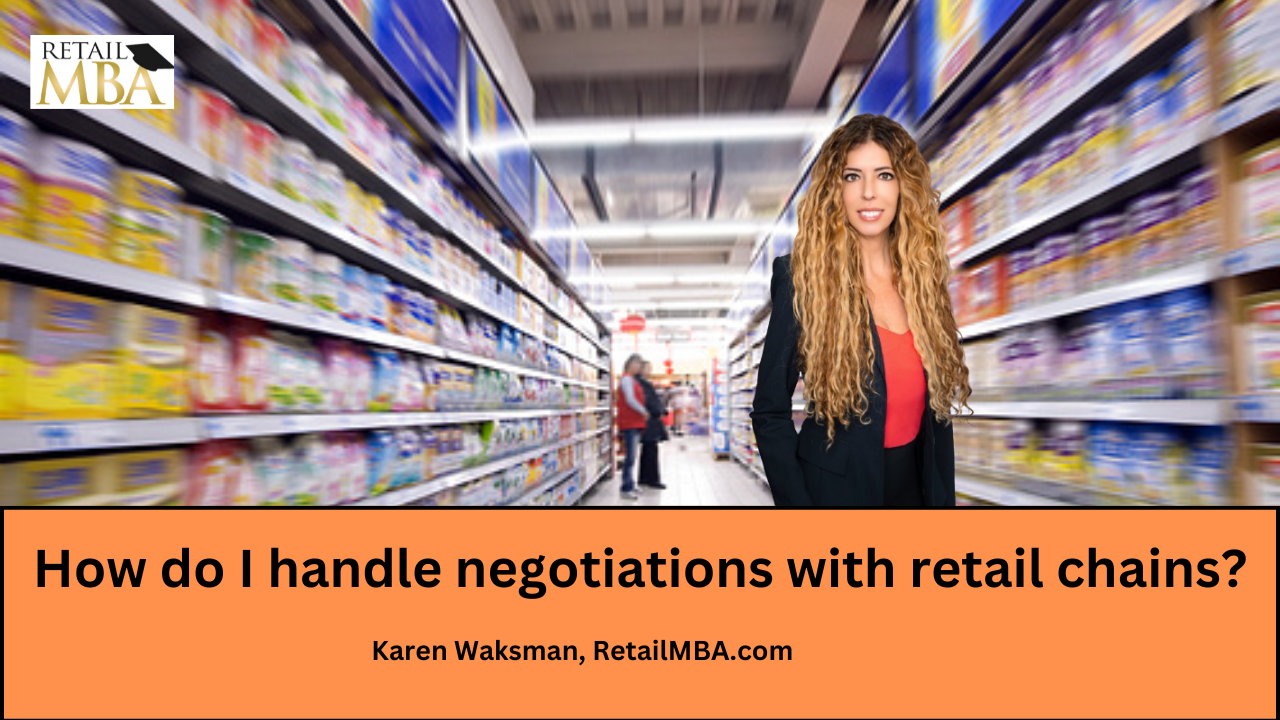Gross Margin Formula
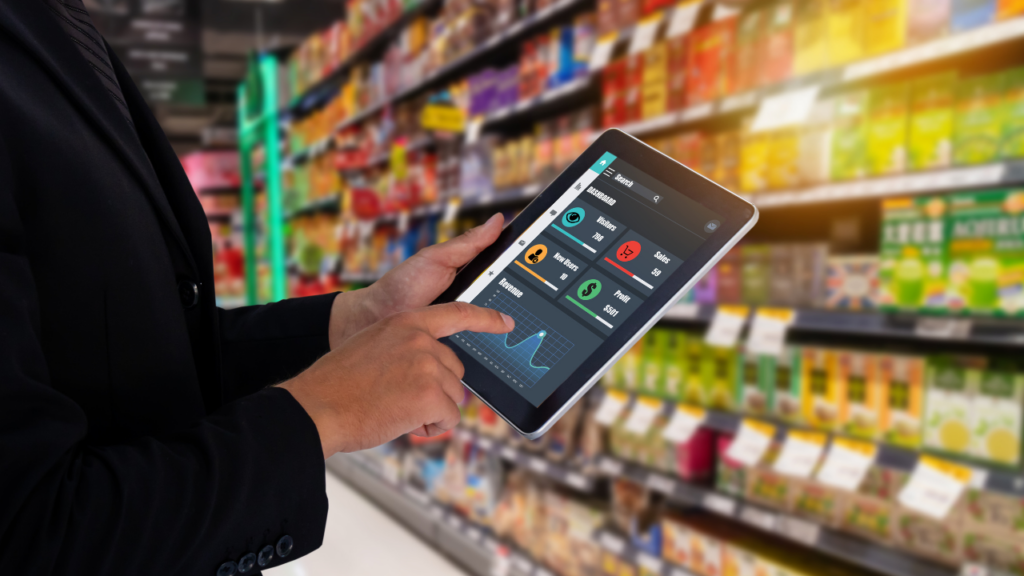
Gross Margin Formula for Consumer Products Brands and Working with Chain Stores! See Below for More Details of a Gross Margin Formula with Examples Below.
When consumer product brands decide to sell their merchandise in chain stores one crucial aspect that greatly contributes to their success is effectively managing margin. Chain stores have requirements. Make influential decisions that can significantly impact a brands profitability. In this guide we will explore strategies, for maximizing margin when venturing into chain store sales.
Defining Gross Margin in the Context of Chain Stores
Within the realm of chain stores gross margin remains a concept. It represents the percentage difference between revenue and the cost of goods sold (COGS). This metric serves as an indicator of a brands product profitability.
The Significance of Gross Margin in Chain Stores
Recognizing the importance of margin in chain store sales is essential. It directly impacts a brands profitability and overall success within this market segment. Various factors influence margin, thus requiring a strategy for effective optimization.
Factors That Influence Gross Margin in Chain Store Sales
Retailer Expectations Regarding Gross Margin
chain stores have varying expectations when it comes to margin. Understanding these expectations rooted in pricing strategy, target market and product categories is crucial. Tailoring your pricing strategy to meet retailer requirements can provide an advantage.
Negotiating and Securing Discounts, for Bulk Purchases
When buying in bulk from chain stores there’s an opportunity to secure volume discounts. By using negotiation strategies you can maintain a gross margin while also satisfying the retailer.
Understanding the Complete Cost of Goods Sold (COGS)
To calculate your COGS it’s important to consider all the costs associated with producing, packaging and delivering your products to the retailer. Having an understanding of COGS empowers you to develop pricing strategies that align with your desired margin objectives.
Taking Shipping and Distribution Costs into Account
The costs of transportation and distribution can have an impact on your margin. It’s crucial to understand and evaluate these expenses in order to determine your pricing strategy and overall profitability.
Navigating Between Private Label and Branded Products
Some chain stores may lean towards carrying their label or store branded products. It is essential to grasp the pricing structure and implications of this preference on your margin.
Efficiently Managing Inventory
managing inventory is key when dealing with chain stores expectations. Ensuring product availability is vital for maximizing sales while avoiding penalties from overstocking or missed opportunities due to
Dealing with Promotions and Markdowns
Promotional events and markdowns are practices in chain stores. They can have an impact, on margin so its important to develop a pricing strategy that accommodates these fluctuations without sacrificing profitability.
Pricing Strategy
Developing a suited pricing strategy that aligns with the retailers pricing and promotion policies is crucial. This may involve strategies such, as the manufacturers suggested price (MSRP) or a pricing structure that meets the retailers desired margin.
It is important to understand and consider the costs associated with slotting fees and cooperative advertising. Negotiating terms that strike a balance between activities and preserving margin is key.
Review and Adaptation
Managing gross margin requires review and adaptation. Regularly assessing pricing strategies and monitoring margin performance are essential to ensure long term profitability and competitiveness.
The decisions made regarding pricing directly impact the perception of a brand. It is vital to align the pricing strategy with the brands positioning and cater to the target market of the retailer in order to maintain a brand image.
Meeting packaging, labeling and quality standards set by chain stores is imperative for compliance. Failure to meet these requirements can lead to penalties that affect margin negatively.
Gross Margin and Chain Stores
In conclusion effectively managing margin in consumer product sales at chain stores involves facets. Paying attention to pricing, logistics, promotional strategies and complying with retailer stipulations are all critical for maintaining an profitable relationship, with chain stores.
To achieve profitability, within the chain store sales market brands must carefully. Address the key factors that impact gross margin. By adopting an approach that takes into account the dynamics of chain stores brands can navigate the complexities and position themselves for long term success in consumer product sales.

Gross Margin Formula – Here’s a formula on calculating the gross margin of consumer products with an example!
Gross margin refers to the profit your company generates on products or services before deducting selling and administrative expenses. It can either be expressed as an absolute amount, or as a percentage of net sales.
Monitoring gross margin is an excellent way to observe trends in your company’s profitability. An increase in profits may signal improved efficiency while decreases could indicate higher overhead costs or more intense competition in your industry.
Both gross profit and gross margin are metrics that business owners should regularly assess to ensure profitability. In this article we will cover the following topics:
- Understanding Gross Profit Margin
- How to Calculate Gross Profit in Dollars
- Calculating Gross Margin/Gross Profit Margin
- Determining what constitutes a Gross Margin
- Calculating Gross Margin for Service Based Companies
- The Connection between Gross Profit Margin and Net Profit Margin
- The Importance of Calculating Operating Margin
- Industries with High Profit Margins
If you require advice, on income taxes it would be advisable to reach out to an accountant in your area.
What is the Gross Profit Margin?
The gross profit margin reveals the efficiency of a company’s operations and its ability to generate profits through the sale of products or services. It is also referred to as margin.
The term “profit margin” can refer to margins when considered independently each assessing the cost of doing business with or without expenses
Operating profit margin; Calculated without factoring in interest or taxes
Pre tax profit margin; Demonstrates profits before tax deductions are made.
Net profit margin; Takes into account all expenses associated with product production; often called the ” line.”
How to Calculate Gross Profit in Monetary Terms
To determine profit in terms you can employ your income statement and use the following formula;
Lets illustrate this calculation using an example for both gross profit and gross margin.
Imagine Tinas T Shirts, a business that has been operational for a year. Tina wishes to gain insights, into how expenses influence her company’s profitability. Consequently she accesses her accounting software. Commences some calculations.
Her total sales revenue amounts to $400,000 for the year.
The cost of goods sold stands at $325,000.
The cost of goods sold includes the expenses related to labor, raw materials and manufacturing overhead required to produce the products that she sells. In terms these are referred to as ” costs.”
To determine the profit in terms she would perform the following calculation;
$400,000 minus $325,000 equals $75,000.
This means that Tina has generated a profit of $75,000.
When you want to assess your profit margin it is important to calculate it as a percentage.
To calculate the profit margin after determining the gross profit amount you can use this formula:
Continuing with Tinas T Shirts example the calculation, for gross margin is as follows;
($75,000 divided by $400,000) multiplied by 100 equals 18.75%.
Therefore Tinas T Shirts has a profit margin of 18.75%.
Now lets consider what constitutes a margin:
In Tina’s case mentioned above she wonders if her margin of 18.75% is satisfactory or if she should aim for results. There are two factors she needs to consider in this evaluation.
Firstly it is essential to recognize that gross profit margins vary across industries. A high profit margin is one that exceeds the average for its industry. According to CFO Hub data reported by them retailers generally have a profit margin of 24.27%.
Tinas business seems to be, below average with a profit margin of 18.75%. She may want to consider either raising prices or finding ways to reduce costs without compromising on quality.
Startup profit margins are typically lower because new operations take time to develop efficiency.
Examples of Profit Margin Formula
Since this is Tina’s year in business there’s no need for her to panic about the below average gross profit margin. However she could potentially improve efficiency. Achieve profits in the future. She’s also been contemplating expanding her clothing line.
Before diving into expanding Tina should carefully evaluate how investing in labor and manufacturing for the products would impact her margin. It might be beneficial for her to produce a batch of the clothing items and assess their performance before making them a permanent addition to her company based on profitability.
Now lets shift gears and consider Peter, who owns a landscape business as an example of calculating margin for a service based company. This year Peter generated $250,000, in revenue without any cost of goods sold since he doesn’t sell products.
He offers a service where he takes care of his customers lawns by mowing them trimming the bushes and trees and cleaning up any litter in the yard.
Since there are no costs associated with the goods sold Peters gross profit is equal, to his revenue, which amounts to $250,000. This means that his gross margin percentage is 100%. All of the revenue he earns can be used to cover his expenses.
Peter needs to monitor his margin (the final profit after accounting for operating expenses) because even though his gross profit margin is 100% it’s important to ensure that the company remains profitable.
The relationship between profit margin and net profit margin is significant
While monitoring your margin is crucial for sustaining your business by generating revenue the net profit margin provides a more definitive measure of profitability.
This is because the gross profit margin doesn’t consider factors such as administration and personnel costs. If not managed properly these indirect costs can significantly impact a company’s profit.
Whether you’re seeking financing, from a bank or thinking about bringing on a business partner, what matters most is the line ( margin).Why is it important to calculate the operating margin?
Calculating the margin provides an understanding of a company’s profitability. However it doesn’t consider factors such, as administration and personnel costs, which are taken into account when calculating the operating margin.
If these indirect costs aren’t managed effectively they can significantly impact a company’s profit. Often management tends to reduce administration and personnel expenses because these reductions do not affect the core operations of a business which are crucial for its survival.
Which businesses have the profit margins?
Service oriented businesses usually have gross margins. This is because they don’t have costs associated with manufacturing products (or none all).
Why do some businesses choose to manufacture products when service based businesses tend to generate profits? Well if a business is large enough it can benefit from economies of scale. This means that as output increases the average cost of goods sold decreases.
Based on data from IBIS World, some industries, with profit margins include software developers, industrial banks and commercial leasing operations.
Industries, with profit margins typically include grocery stores, construction companies and publishers. To assess your margin it’s advisable to compare it with industry averages in order to gauge how well you fare against your competitors. For startup business owners it is crucial to monitor their company’s finances by reviewing the gross profit margin on a monthly or quarterly basis and keeping track of cash flow and inventory levels. This practice will assist in optimizing the performance of your company.

Details of Gross Profit Margin Revealed Here:
Gross margin refers to the profit your company generates on products or services before deducting selling and administrative expenses. It can either be expressed as an absolute amount, or as a percentage of net sales.
Monitoring gross margin is an excellent way to observe trends in your company’s profitability. An increase in profits may signal improved efficiency while decreases could indicate higher overhead costs or more intense competition in your industry.
Cost of Goods Sold
No matter if your company manufactures its own goods or orders them to sell on, its costs must be monitored. Known as cost of goods sold or COGS, these costs must be subtracted from revenue in order to calculate gross profit. Calculating COGS involves tallying all direct expenses associated with creating or purchasing products your business sells over a given time period – such as week, month or year – such as labor, material costs and variable production expenses. COGS does not encompass indirect or fixed costs that cannot be directly tied to product sales, such as storage costs and depreciation expenses. These should be listed under “selling, general and administrative expenses” on your income statement.
Maintaining accurate records of your company’s COGS is vital, not only to accurately report gross profit, but also to identify any areas where money could be being lost on certain products. If, for instance, one item seems significantly less profitable than anticipated, you could negotiate better terms with suppliers or optimize production processes in order to make that product more lucrative.
There are various methods for calculating COGS, including FIFO (first in, first out) and LIFO (last in, first out). But the most widely-used technique is weighted average which uses an average cost per item to determine its value rather than using its original purchase price as the basis for calculations. This approach works particularly well when producing multiple products as each can take advantage of having similar cost structures.
Other expenses to include in COGS could be trade discounts, cash discounts and manufacturer rebates that vary with each sale’s timing. Depending on local tax laws, you may also have to account for inventory at both ends of every tax year and subtract its ending value from its beginning value in order to calculate COGS accurately.
Your Cost of Goods Sold (COGS) can be affected by how you manage your inventory, which in turn has an effect on your gross margin. A fluctuating COGS could indicate poor product quality or that suppliers are overcharging for materials; should this happen, consider switching vendors that provide lower-cost materials.
Revenue
Gross margin (also referred to as gross profit margin) measures the percentage of revenue that remains after deducting all direct costs from sales revenues, providing one of the key profitability metrics used by investors and analysts to evaluate a company’s ability to generate profits through its products and services. Gross margin figures appear in an income statement alongside other expenses such as selling and administrative (S&A), financing costs, taxes etc.
Gross margins vary significantly across industries and production processes, depending on industry, the cost of materials, and other considerations that influence production processes. Software developers and service-based businesses tend to experience higher gross margins since they don’t incur as many manufacturing expenses than a construction firm or grocery store would.
Gross margin can also be affected by how a company allocates expenses; misallocating marketing expenses toward COGS, for instance, could significantly erode a company’s margins. It is essential to regularly assess your gross margin against similar businesses within your industry in order to identify areas for improvement and boost overall company profitability.
Gross profit margin can provide valuable insights into the health of your company’s finances; however, when measured alongside other metrics such as net income and operating cash flow it will provide a fuller picture. Operating cash flow measures the difference between cash inflows minus outflows which includes payments made to suppliers, employee wages and debt payments – it’s essential that this be monitored closely during lean periods as this will give an indication as to whether interest payments on outstanding debt or loans can continue uninterrupted.
Gross margin is an effective metric to track as it indicates how much of your sales revenue remains after subtracting all direct expenses, but doesn’t account for indirect costs such as office expenses and employee salaries that play an essential part of profitability for any business. Plus, due to being expressed as a percentage it won’t fluctuate as dramatically with sales volume changes like net income would do.
Cost of Labor
Labor costs can be one of the largest expenses for many small businesses, so understanding its components and calculations can help business owners better manage this critical expense.
“Cost of labor” generally refers to wages paid out to employees in a company, including payroll taxes and employee benefits. Calculation of this expense can be divided into two main categories: direct and indirect labor costs. Direct labor costs encompass all wage expenses related directly to producing a commodity, such as time clock codes that link specific manufacturing departments or materials used during production processes. Conversely, indirect labor costs refers to expenses that cannot be associated with any one product but instead are distributed across an organization as office managers, sales team members or maintenance personnel – these could include office managers, sales team members and maintenance staff among others.
Indirect labor cost calculations typically include payroll taxes, employee health insurance premiums, dental and vision plans as well as related payments such as training programs for employees as part of indirect labor expenses. The percentage can range anywhere between 20%-35% of gross sales depending on industry specificity; it should be adjusted periodically as necessary.
Effective business management hinges upon keeping labor costs under control, which makes controlling labor costs an essential element. Before hiring any new employees, conduct a detailed analysis to ascertain their wages and benefits data accuracy. Use an accounting software program with proven reliability and support that provides you with a clear breakdown of all elements that comprise total labour costs, such as payroll. Doing this will allow your business to reach new heights of profitability; just as preparing a budget before signing an apartment lease agreement is crucial; similarly it is imperative to calculate labor costs thoroughly prior to hiring new staff members.
Cost of Materials
Cost of materials (COGS) plays a critical role in gross margin. For instance, when baking cookies at a bakery, ingredient costs increase with every batch baked; however, salaries and overhead expenses don’t proportionally increase with production numbers; consequently, gross profit could drop significantly should COGS rise more rapidly than sales volumes.
Small business owners must carefully analyze their costs in order to classify them as direct or indirect costs. Direct costs relate directly to producing one specific product, like materials and labor used during production; indirect costs could include rent, utilities and insurance premiums. A gross margin calculation involves subtracting all direct and indirect expenses from net sales revenue in order to calculate an organization’s gross profit.
Companies can utilize gross profit margin to assess their performance over time or compare it against similar businesses in their industry. A high gross profit margin indicates an efficient production line turning raw materials into finished products at an efficient rate and selling them at profitable prices; it may also indicate more operational control than competitors, which allows it to raise prices without incurring market share losses.
Manufacturers can look at their gross profit margin to decide whether to expand production capacity and increase revenue. If their current production exceeds capacity, then considering investing in additional equipment or hiring additional employees to take advantage of any extra capacity may be beneficial.
Alternately, manufacturers can use gross profit figures to identify which products are the most profitable and focus their marketing efforts accordingly. If a company’s gross margin falls below target levels, offering discounts could boost sales through offering sales promotions on products which don’t generate as much revenue.
The material margin metric provides manufacturers with an easy, effective means of contextualizing manufacturing costs and pricing competitively in their markets. It can be calculated as revenue minus all direct materials such as overhead and labor expenses that go beyond direct materials costs.
Step-by-step training on how to sell to retail chains!
We explain exactly how to do that and how to get started today. I’ve taught over 100,000 of companies over the years across the globe on how to get your products to the stores. And so we’re here to support you. Or please subscribe to our Youtube channel and or be on the lookout for additional training that we create.
We are here to expedite the process of generating revenue with your physical products and that’s what we’re all about. Take a look at our advanced training, live events, certification programs and so much more.
In this training, I will discuss some of the things to think about when approaching a retailer to sell your products and become a vendor. Hope it helps! 🙂
Karen Waksman,
Retail MBA
Questions? Contact Us!
1-855-Retail-2 (Call or Text)
Email: info@retailmba.com
Retail MBA provides a step-by-step formula on How to Sell to Major Retailers, Online Retailers, Smaller Retailers, Catalogs and More. No Experience Required! These solutions continue to convert for clients year-over-year! These are Time-Tested and Proven Strategies that we utilize ourselves when going after stores! Everything we teach, we test. Want access to these formulas? ANY one of our programs and coaching systems gives you access to them now. With that said…
Here are 5 Easy Ways to Work with Us:
1) Free Training – If You Would Like to Join Our Next FREE Webinar Training Called “Retail Chain Store Secrets – How to Sell to Major Retail Chains. No Experience Required” Then Sign Up NOW To Learn All About Selling into Retail Chains By Clicking Here!
2) Retail MBA Year Long Coaching and Training System – Our Year Long Coaching and Training System with Karen Waksman is POWERFUL! This is our most popular training and coaching system! We walk you through how to approach, pitch and sell to retail chains and we coach you along the way! Join us by Clicking Here!
3) Masterclass Intensives – Want to Join our Next 4 Week Elite Retail MBA Masterclass Intensive? These Intensives Are EPIC for people who Love Fast Paced Learning – Homework, Retail Coaching, Developing Your Strategy, Buyers Contacts and More! These Events Are Held Every Quarter. Join us by Clicking Here!
4) Done-for-You Program – If You Want Karen Waksman and Her Team to Reach Out to Your Top Dream Retail Chains On Your Behalf – And You Have a Retail-Ready Product, Check Out our Epic Done-For-You Service by Clicking Here!
5) In Person Events – If You Want to Learn LIVE and Meet Karen Waksman in Person at Our Next “America’s Next Retail Product: LIVE Event with Other Like-Minded Individuals in Beautiful San Diego, CA! We Would LOVE to Have You Join Us by Clicking Here!
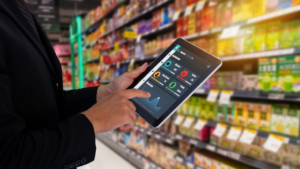
Check Out Our Additional Blog Posts Here:
Retail Terms
Retail Terms – What are the payment terms typically offered by retail chains? Click Here to Learn More!
Retail Vendor
Retail Vendor – What are the common mistakes to avoid when selling to retail chains? Click Here to Learn More!
How to Sell Your Holiday Products to Retail Chains
New Training on How to Sell Your Holiday Products to Retail Chains
Ulta Beauty Vendor
Ulta Beauty Vendor – How to Sell to Ulta Beauty Stores. Click Here to Learn More!
Retail Strategy
Retail Strategy – How do I handle negotiations with retail chains? Click Here to Learn More!

